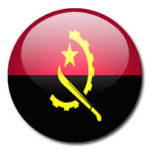The Portuguese that we teach at Transaction Linguistics is 100% Brazilian Portuguese, but the difference between Brazilian Portuguese and Portuguese is no greater than the difference between American English and British English. It is mainly a difference in accent. A foreign business executive who lives in Brazil for several years and is then transferred to Portugal will be able to make the transition to be able to understand Portuguese Portuguese very quickly. And since the accent is quite different from Brazilian Portuguese, the executive will in all likelihood retain his Brazilian accent, just as most Americans do when they move to the U.K.
 Which is easier to learn, Brazilian Portuguese or Spanish? That depends on how much of the language one wants to learn. Brazilian Portuguese has a spoken vernacular that is a stripped down, bare-bones version of the written language. It is stripped down both from the point of view of grammar and vocabulary. This is the language of the street, and it can be learned relatively fast. There is a wide gulf, however, between it and the language of a newspaper. A foreign business executive would not use the vernacular to address the São Paulo Chamber of Commerce. It is earthy, basic, and gets the job done in most informal situations.
Which is easier to learn, Brazilian Portuguese or Spanish? That depends on how much of the language one wants to learn. Brazilian Portuguese has a spoken vernacular that is a stripped down, bare-bones version of the written language. It is stripped down both from the point of view of grammar and vocabulary. This is the language of the street, and it can be learned relatively fast. There is a wide gulf, however, between it and the language of a newspaper. A foreign business executive would not use the vernacular to address the São Paulo Chamber of Commerce. It is earthy, basic, and gets the job done in most informal situations.
Since Spanish is spoken is so many different countries, however, it is harder to make generalizations about it. But it safe to say that the difference in Spanish between the spoken vernacular and the written language is a smaller difference than is the case with Brazilian Portuguese. And this means that the spoken vernacular in Spanish is not nearly as stripped down as it is in Brazil. For example, the Brazilian vernacular omits almost all direct object and indirect object pronouns. In Spanish, they must be used to avoid sounding like an illiterate. In spoken Spanish there is is much more rigor as to syntax, the sequence of tenses, and the use of the subjunctive.
 On the other hand, the phonetics in Spanish are definitely easier to pick up. Brazilian Portuguese has a much greater array of vowel sounds. Also, Brazilian Portuguese has, like French, many nasalized sounds. Spanish has none. The American ear does not pick up easily the complexity of these sounds. They can only be mastered with lots of drilling.
On the other hand, the phonetics in Spanish are definitely easier to pick up. Brazilian Portuguese has a much greater array of vowel sounds. Also, Brazilian Portuguese has, like French, many nasalized sounds. Spanish has none. The American ear does not pick up easily the complexity of these sounds. They can only be mastered with lots of drilling.
So, comparing the degree of difficulty between learning to speak the Brazilian vernacular and the spoken version of business Spanish, I would call it a toss-up. The Brazilian vernacular grammar and syntax are a lot easier, but the pronunciation is a lot more difficult.

 Enter Your Name and Email Address BELOW to Get a FREE Copy of "Learning a Foreign Language is a Physical Not An Intellectual Exercise"
Enter Your Name and Email Address BELOW to Get a FREE Copy of "Learning a Foreign Language is a Physical Not An Intellectual Exercise"